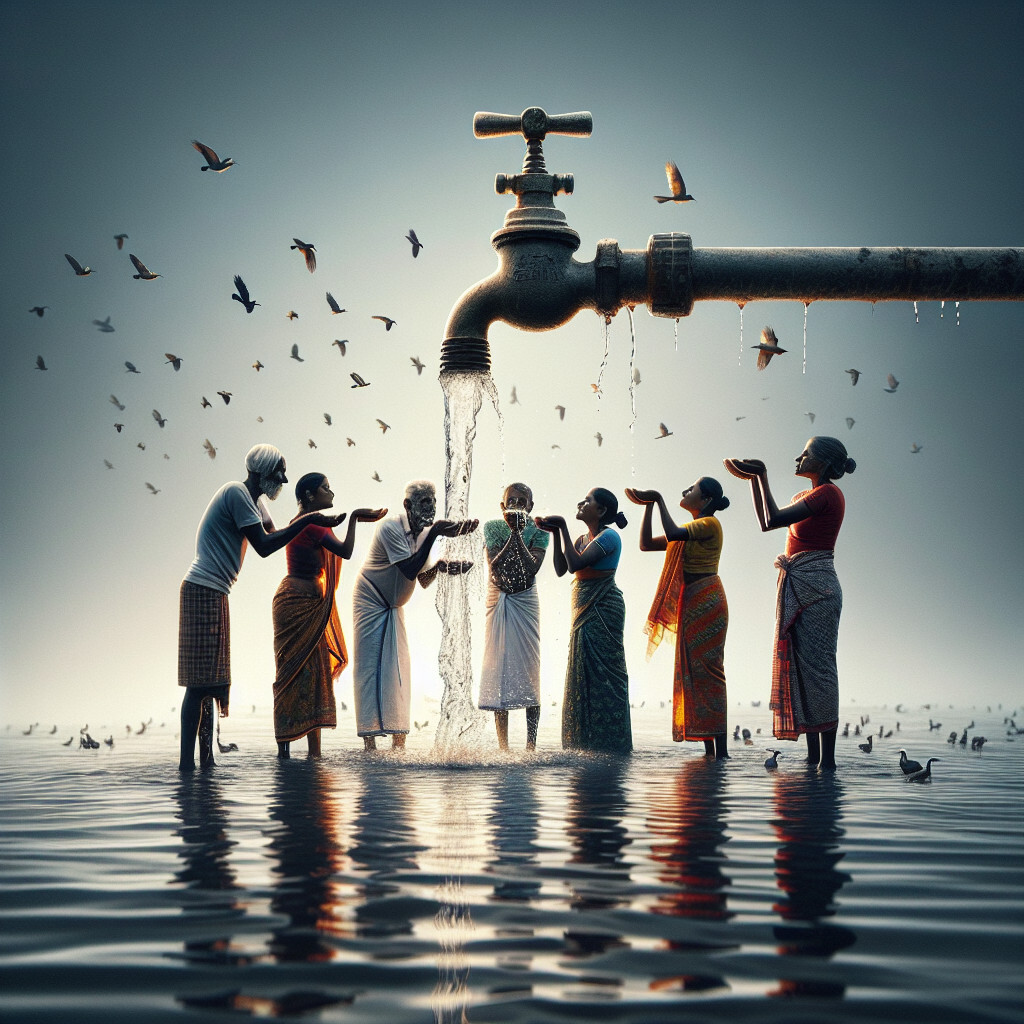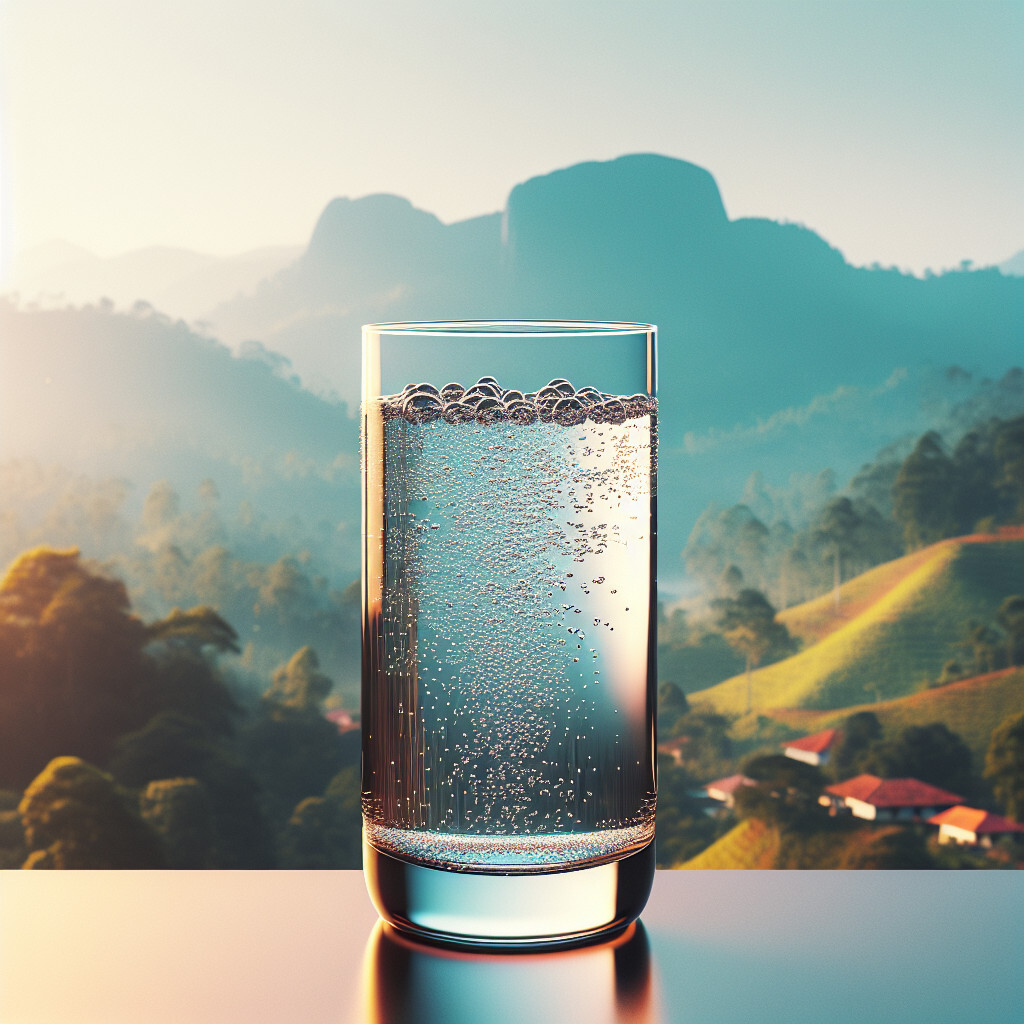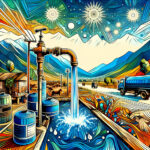-
Table of Contents
“Sri Lanka’s Tap Water: A Blend of Purity and Freshness.”
Introduction

Tap water in Sri Lanka is generally not recommended for drinking, especially for tourists, due to potential contamination. While it is used for cleaning and bathing, it’s advisable to boil the water before consumption or to opt for bottled water. The quality of tap water can vary greatly from region to region, with some areas having access to treated water supplies, while others may not. Despite efforts by the government to improve the water supply infrastructure, issues such as pollution, outdated pipelines, and lack of treatment facilities can affect the safety of tap water.
Understanding the Quality of Tap Water in Sri Lanka
Sri Lanka, the pearl of the Indian Ocean, is renowned for its natural beauty, rich culture, and warm hospitality. However, one aspect that often goes unnoticed is the quality of its tap water. Understanding the quality of tap water in Sri Lanka is crucial for both locals and tourists, as it directly impacts health and wellbeing.
Sri Lanka’s tap water quality varies significantly across the country. In urban areas, the water supplied by the National Water Supply and Drainage Board (NWSDB) is generally safe for consumption. The NWSDB, the main provider of water services in Sri Lanka, adheres to the World Health Organization’s guidelines for drinking water quality. They conduct regular tests to ensure the water is free from harmful bacteria, viruses, and chemicals. However, it is advisable to boil the water before drinking to eliminate any potential residual contaminants.
In contrast, the quality of tap water in rural areas can be inconsistent. Many rural communities rely on wells, rivers, and rainwater for their water supply, which may not always be treated or filtered. Consequently, the water may contain harmful microorganisms and pollutants, posing a risk to health. Therefore, it is recommended to either boil or filter the water before consumption in these areas.
Furthermore, certain regions in Sri Lanka are affected by a unique water quality issue known as Chronic Kidney Disease of unknown etiology (CKDu). This disease, prevalent in the North Central Province, is believed to be linked to the consumption of water contaminated with high levels of fluoride, agrochemicals, and heavy metals. The government and various organizations are working tirelessly to address this issue by providing safe drinking water facilities and raising awareness about the importance of consuming clean water.
Despite these challenges, Sri Lanka has made significant strides in improving access to clean water. According to the World Bank, over 90% of the population has access to at least basic water services. This is a testament to the country’s commitment to achieving the United Nations’ Sustainable Development Goal of ensuring access to clean water and sanitation for all.
However, it is important to note that while the tap water in Sri Lanka is generally safe to drink, it may not agree with everyone, especially tourists who are not accustomed to it. Changes in water can sometimes lead to minor stomach upsets due to the different mineral compositions and microorganisms present. Therefore, tourists are often advised to stick to bottled water, which is readily available throughout the country.
In conclusion, the quality of tap water in Sri Lanka varies across the country. While the water in urban areas is generally safe for consumption, caution should be exercised in rural areas and regions affected by CKDu. The country has made commendable progress in improving access to clean water, but there is still work to be done. For tourists, it is advisable to drink bottled water to avoid any potential health issues. Understanding the quality of tap water in Sri Lanka is not only important for health reasons but also provides insight into the country’s broader environmental and public health challenges.
The Impact of Infrastructure on Sri Lanka’s Tap Water
Sri Lanka, the pearl of the Indian Ocean, is renowned for its natural beauty, rich culture, and warm hospitality. However, one aspect that often goes unnoticed is the quality of its tap water. The infrastructure of a country plays a pivotal role in determining the quality of its tap water, and Sri Lanka is no exception. The impact of infrastructure on Sri Lanka’s tap water is a topic that warrants a closer look.
Sri Lanka’s water supply and sanitation infrastructure have seen significant improvements over the past few decades. The government, along with various international organizations, has invested heavily in the development of water treatment plants, pipelines, and distribution networks. This has resulted in a substantial increase in the availability of clean and safe tap water, particularly in urban areas. According to the World Health Organization, approximately 82% of the urban population in Sri Lanka now has access to improved water sources.
However, despite these advancements, the quality of tap water can vary significantly across the country. This is primarily due to the uneven distribution of water infrastructure. While urban areas benefit from modern water treatment facilities and well-maintained distribution networks, rural areas often rely on outdated systems or even lack access to piped water altogether. Consequently, the tap water in these areas may not meet the necessary health and safety standards.
Another factor that influences the quality of tap water in Sri Lanka is the condition of the existing water infrastructure. Many parts of the country’s water supply system are aging and in need of repair or replacement. Leaking pipes, for instance, can lead to the contamination of tap water with harmful bacteria and other pollutants. Moreover, the lack of regular maintenance and monitoring can exacerbate these issues, further compromising the quality of the tap water.
Climate change also poses a significant threat to Sri Lanka’s water infrastructure. Rising temperatures, erratic rainfall, and extreme weather events can damage water supply systems and disrupt service delivery. For instance, prolonged droughts can reduce the availability of surface water, forcing communities to rely on groundwater sources that may be contaminated. On the other hand, heavy rainfall can lead to flooding and the overflow of sewage systems, contaminating water sources and making the tap water unsafe for consumption.
In response to these challenges, the Sri Lankan government has been taking steps to improve the country’s water infrastructure. This includes investing in the upgrade and maintenance of existing water supply systems, as well as the construction of new facilities in underserved areas. Efforts are also being made to enhance the resilience of the water infrastructure to climate change, through measures such as the adoption of sustainable water management practices and the use of climate-resilient construction materials.
In conclusion, the quality of tap water in Sri Lanka is largely influenced by the state of the country’s water infrastructure. While significant progress has been made in improving water supply and sanitation services, there are still areas that require attention, particularly in rural regions and in terms of infrastructure maintenance. As Sri Lanka continues to develop and modernize, it is crucial that these issues are addressed to ensure that all citizens have access to clean and safe tap water.
Health Implications of Drinking Tap Water in Sri Lanka
Sri Lanka, the pearl of the Indian Ocean, is renowned for its stunning landscapes, rich culture, and warm hospitality. However, one aspect that often raises questions among tourists and locals alike is the quality of tap water. The health implications of drinking tap water in Sri Lanka are a topic of concern and warrant a closer look.
The quality of tap water can vary significantly across the country. In urban areas like Colombo, the water supplied by the National Water Supply and Drainage Board (NWSDB) is generally safe to drink. The NWSDB follows international standards for water treatment, ensuring that the water is free from harmful bacteria and contaminants. However, it’s important to note that the water can sometimes have a slightly chlorinated taste due to the disinfection process.
In contrast, the situation in rural areas is quite different. Many rural communities rely on wells, rivers, and other natural sources for their water supply. These sources are often contaminated with bacteria, viruses, and parasites, leading to a high risk of waterborne diseases. Furthermore, the lack of proper sanitation facilities in these areas exacerbates the problem.
Another significant issue is the presence of agrochemicals in the water. Sri Lanka has a predominantly agricultural economy, and the excessive use of pesticides and fertilizers has led to groundwater contamination in many regions. Chronic Kidney Disease of unknown etiology (CKDu), a serious health issue affecting thousands of people in the North Central Province, has been linked to the consumption of water contaminated with these chemicals.
The high fluoride content in the water in certain areas is another concern. While fluoride is beneficial for dental health in small amounts, excessive fluoride can lead to dental and skeletal fluorosis, conditions characterized by damage to teeth and bones.
The government of Sri Lanka is aware of these issues and has taken steps to improve the water quality. Projects have been initiated to expand the piped water network, especially in rural areas. Efforts are also being made to regulate the use of agrochemicals and promote organic farming practices.
However, until these measures fully take effect, it is advisable for both locals and tourists to take precautions. Boiling tap water before drinking or using it for cooking is a simple and effective way to kill bacteria and other pathogens. Alternatively, bottled water is widely available and is a safer choice, especially for those with a sensitive stomach. Water filters and purification tablets can also be used to ensure the water is safe to drink.
In conclusion, while the tap water in Sri Lanka’s urban areas is generally safe to drink, caution should be exercised in rural areas due to potential contamination. The presence of agrochemicals and high fluoride levels in some regions also pose health risks. Therefore, it is advisable to boil tap water, use bottled water, or employ water purification methods to ensure safety. As the government continues its efforts to improve water quality, it is hoped that safe and clean drinking water will soon be accessible to all in Sri Lanka.
Solutions to Improve the Tap Water Situation in Sri Lanka
Sri Lanka, a tropical island nation in the Indian Ocean, is known for its diverse landscapes, rich culture, and warm hospitality. However, one aspect that often raises concerns among both locals and tourists is the quality of tap water. While the government has made significant strides in improving access to clean water, challenges persist, particularly in rural areas. This article will delve into the current state of tap water in Sri Lanka and explore potential solutions to enhance its quality and accessibility.
The quality of tap water in Sri Lanka varies significantly across the country. In urban areas like Colombo, the water is generally safe to drink, thanks to advanced treatment facilities. However, in rural regions, the situation is quite different. Many communities rely on untreated surface water or shallow wells, which are susceptible to contamination from agricultural runoff, industrial waste, and natural pollutants. As a result, waterborne diseases such as diarrhea and typhoid are prevalent in these areas.
Moreover, the country’s aging infrastructure exacerbates the problem. Many of the pipes that deliver water to households are old and corroded, leading to further contamination. Additionally, irregular water supply in certain regions forces people to store water, creating a conducive environment for bacterial growth.
Addressing these issues requires a multi-faceted approach. First and foremost, there is a need to upgrade the existing water infrastructure. This includes replacing old pipes and expanding the reach of water treatment facilities to rural areas. Such improvements would not only enhance the quality of tap water but also ensure a more consistent supply.
Secondly, the government should invest in advanced water treatment technologies. While traditional methods like chlorination are effective in eliminating most pathogens, they are less successful against certain types of bacteria and viruses. Moreover, they do not remove chemical pollutants. Advanced technologies like reverse osmosis and UV treatment can address these shortcomings, providing a more comprehensive solution.
Thirdly, there is a need for better regulation of industrial activities and agricultural practices. Strict enforcement of environmental laws can prevent harmful substances from entering water sources in the first place. This would also encourage industries and farms to adopt cleaner practices, contributing to overall environmental sustainability.
Lastly, community education plays a crucial role. Many people in rural areas are unaware of the risks associated with consuming untreated water. By conducting awareness campaigns, the government can encourage safe water practices, such as boiling water before consumption and proper storage techniques.
In conclusion, while the tap water situation in Sri Lanka presents significant challenges, it is not insurmountable. With the right investments in infrastructure and technology, stricter regulation of polluting activities, and community education, the country can ensure safe and clean tap water for all its residents. This would not only improve public health but also contribute to the nation’s socio-economic development. After all, access to clean water is a fundamental human right, and fulfilling this right should be a priority for every nation.
Q&A
1. Question: Is the tap water in Sri Lanka safe to drink?
Answer: Generally, it is not recommended to drink tap water in Sri Lanka due to potential contamination. It’s advisable to drink bottled or boiled water.
2. Question: What are the common contaminants in Sri Lanka’s tap water?
Answer: The common contaminants in Sri Lanka’s tap water can include bacteria, viruses, and heavy metals such as arsenic and lead.
3. Question: How is the taste of tap water in Sri Lanka?
Answer: The taste of tap water in Sri Lanka can vary depending on the region and the source of the water. However, due to potential contamination, it’s not recommended to drink it directly from the tap.
4. Question: Are there any efforts to improve the tap water quality in Sri Lanka?
Answer: Yes, the Sri Lankan government and various international organizations are working on projects to improve the water supply and sanitation facilities in the country.
Conclusion
The tap water in Sri Lanka is not consistently safe for drinking. While it may be treated and safe in some urban areas, in many rural regions it can be contaminated with harmful bacteria and pollutants. Therefore, it is generally recommended for travelers to drink bottled or filtered water.






